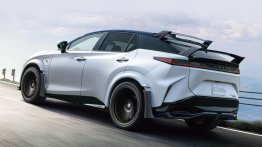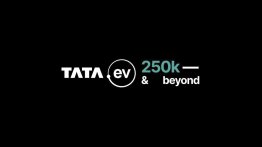While the future of automobiles is certainly going to be electric, the EV space in India is still in its nascent stage. Currently, we have just three mass-market offerings in the electric car market - the Hyundai Kona Electric, the MG ZS EV and the Tata Nexon EV. It’s true that the EV infrastructure may still be in its infancy in India, but early adopters are sure to benefit from these three EVs as they are absolutely contemporary and enticing products with good performance, new-age technologies and ample range. All three vehicles show some good traits but in case you’re looking forward to finding out the clear winner, well, we just did the hard work for you.
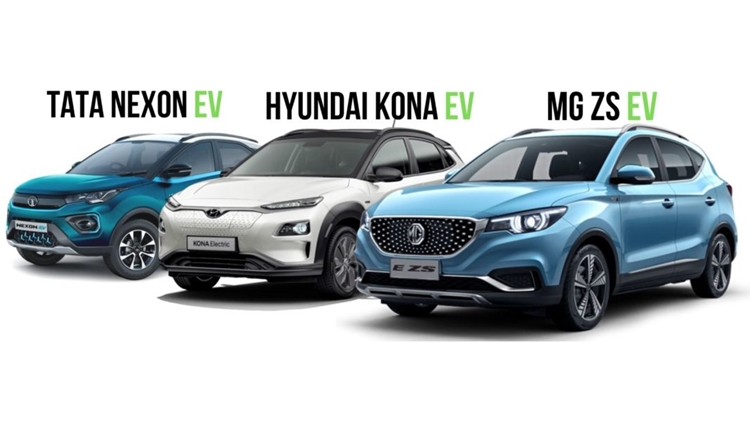
Hyundai Kona Electric vs MG ZS EV vs Tata Nexon EV - Range
| Hyundai Kona Electric | MG ZS EV | Tata Nexon EV | |
| Battery | 39.2kWh Lithium-Ion | 44.5kWh Lithium-Ion | 30.2kWh Lithium-Ion |
| ARAI Claimed Range | 452km | 419km | 312km |
| DC Fast charging (0-100%) | 1 hr(50kW) | 50 min(50kW) | 1 hr(25kW) |
| AC Wall Box Charging | 6 hr 10 min (7.2kW, 0-100%) | 6-8 hr (7kW, 0-80%) | - |
| Portable Charging | 19 hr | 20 hr | 10 hr |
Let's start with what is arguably the most important aspect of an EV - range and charging. Well, as you can see in the table above, it is the MG ZS EV that comes with the largest battery in this comparison. As per ARAI claimed figures, the Hyundai Kona Electric has the highest range of 454km, followed by the MG ZS EV with 419km range and the Nexon EV slotting in the last place with 312km range.
However, ARAI tests are conducted in very ideal conditions. That's why the real-world driving range is often very different from ARAI claimed figures. In real-world conditions, there’s hardly much of a difference between what the Kona and the ZS EV offer, though the Nexon EV does lag behind a fair bit. It must be noted that the driving range greatly depends on several factors including driving style and external conditions but among the trio, the Korean and the British marques are definitely a step ahead of their Indian counterpart.

And while at it, let's talk about charging as well. Using a DC fast charger, the MG ZS EV's batteries will top up the quickest from 0-100% in just 50 mins. The other two EVs take about an hour. However, with DC fast chargers certainly a rarity, customers will be relying more on AC wall box chargers that are provided by both Hyundai and MG, but not Tata Motors. Using an AC wall box charger, the Kona Electric charges just a little quicker than the ZS EV. If you are using a portable 15amp charger, all three vehicles will take considerable time. The Nexon EV takes the least time because it has the smallest battery. Likewise, the ZS EV takes the most amount of time because it has the largest battery.
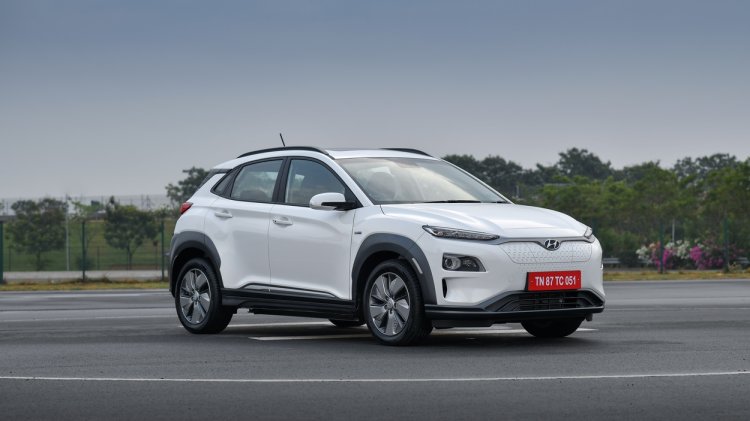
Also Read: Ola Electric Cars to Launch After Their First e-Scooters
Hyundai Kona Electric vs MG ZS EV vs Tata Nexon EV - Performance
| Hyundai Kona Electric | MG ZS EV | Tata Nexon EV | |
| Motor | Permanent magnet synchronous | Permanent magnet synchronous |
Permanent magnet synchronous
|
| Power | 136hp | 143hp | 129hp |
| Torque | 395Nm | 353Nm | 245Nm |
| 0-100 kph Acceleration | 9.09 seconds | 8.53 seconds | 9.30 seconds |
All three EVs are powered by a permanent magnet synchronous motor but produce varying levels of power and torque output. On paper, the Hyundai Kona Electric and the MG ZS EV are more closely matched than the Tata Nexon EV. The Nexon EV has the least power and torque output, but it is also positioned much lower than the other two. The MG ZS EV is the most powerful electric vehicle in this comparison. Meanwhile, the Hyundai Kona Electric has the most amount of torque.
But how do these numbers translate into real-world performance? Well, all three EVs are quite quick indeed, with a sub-10 second time for their 0-100 kph sprint. It is again the MG ZS EV that comes out on top, needing only 8.53 second to sprint from 0-100kph. In spite of having more torque - which is most important in acceleration tests - the Kona Electric comes in second position with a time of 9.09 seconds. Unsurprisingly, the Nexon EV comes last with a time of 9.30 seconds.
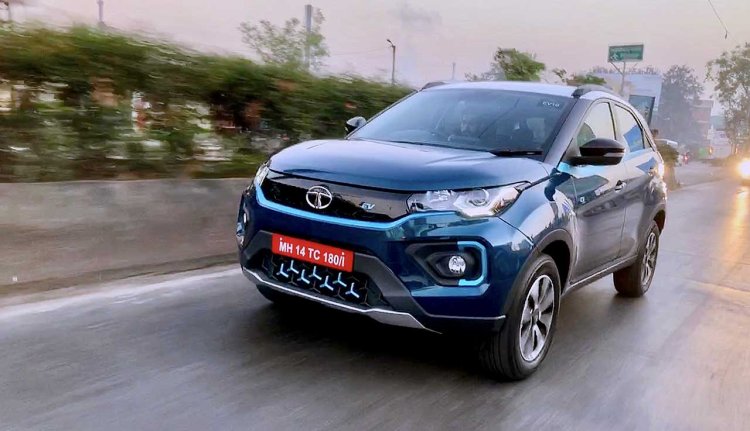
All three EVs are offered with different drive modes that alter the throttle response and the regenerative braking. In their sportiest setting, the MG ZS EV delivers the strongest push back on to your seat effect under hard acceleration. That said, instant torque, linear power delivery and silent performance are common to all three EVs, which makes the experience of the performance less differentiating here.
Hyundai Kona Electric vs MG ZS EV vs Tata Nexon EV - Interior and Features
There’s a big difference in how generously each of these EVs are loaded with features. The Nexon EV, being the most affordable, naturally comes a little less equipped than its pricier rivals. In fact, the look and feel of the interior along with the equipment list is mostly similar to the ICE-powered Nexon. Still, a larger, higher-res touchscreen, better rearview camera and a more EV-specific instrument cluster would have been nicer.
In this comparison, the interior of the MG ZS EV feels premium and upmarket with soft touch materials aplenty. The ZS EV even has the largest infotainment screen in this comparison with an 8-inch unit that also comes with connected car tech. It also stands out for being the only SUV to be offered with a large panoramic sunroof. Other highlights include powered driver's seat, cruise control, electronic parking brake, ambient lighting, a slick infotainment software and much more. The interior feels really well put together with all switches and dials having a nice tactile feel.
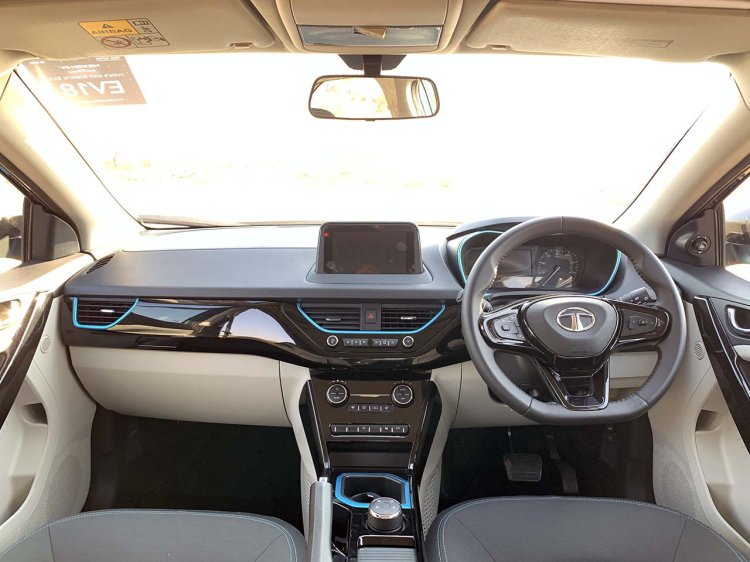
As for the Kona Electric, it gets a funky interior design and is even pretty well loaded. However, it comes with a slightly smaller touchscreen than the ZS EV and even misses out on the XL-size sunroof. Also, while we could be nit-picking here, compared to the Nexon EV as well as the ZS EV, you sit relatively low in the Kona Electric and don’t get the SUV-like commanding driving position.

In terms of interior space, the MG ZS EV, as well as the Kona EV, offer a tad more than the electric Nexon. Going by the dimensions, it’s the ZS EV that’s the largest but practically, it feels as roomy as its Korean rival as both the vehicles have ample headroom, shoulder room and legroom. That said, the panoramic sunroof on the ZS further adds to the sense of space. On the other hand, the Tata Nexon may be the smallest SUV here but isn’t even a wee bit cramped. However, it’s just not as airy as the other two models here.
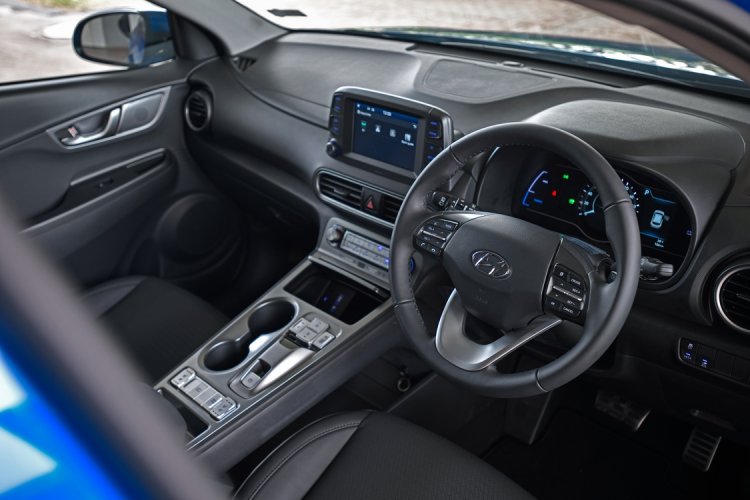
Also Read: What if There's an Electrified Mahindra XUV700 in Pipeline?
Hyundai Kona Electric vs MG ZS EV vs Tata Nexon EV - Price
| Hyundai Kona Electric | MG ZS EV | Tata Nexon EV | |
| Price (ex-showroom) | INR 23.77 - 23.96 lakh | INR 20.99 - 24.18 lakh | INR 13.99 - 16.39 lakh |
| Vehicle | 3 year/unlimited km | 5 year/unlimited km | 3 year/1,25,000 km |
| Battery | 8 year/ 1,60,000 km | 8 year/1,50,000 km | 8 year/1,60,000 km |
Finally, comparing their prices, the Hyundai Kona Electric is the most expensive of the lot, while the MG ZS EV enjoys a pricing advantage if you go for the entry-level model. The fully loaded version, however, is negligibly costlier than the Kona. The Nexon EV is certainly the most affordable EV here, and while its good value-for-money, it does not quite have the sense of occasion that its two rivals offer.
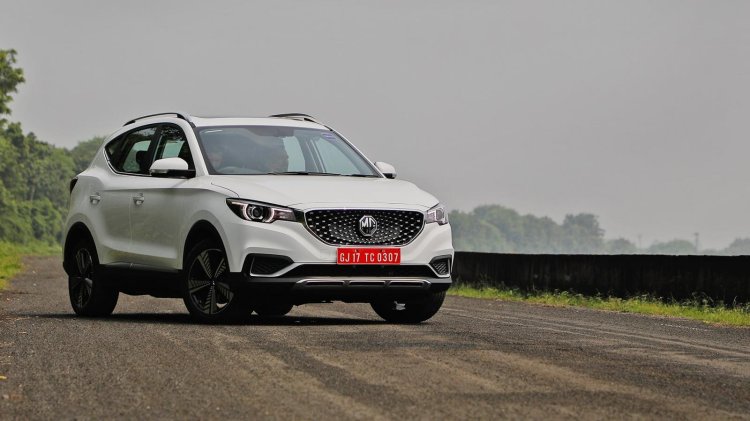
The Tata Nexon EV is certainly a good option for EV buyers on a strict budget but spend a bit more and you can choose between world-class electric cars that are at par with their foreign counterparts. Both Hyundai Kona EV and MG ZS EV are highly capable vehicles that impress on many counts but it’s the latter that is our pick of the lot for offering the highest value proposition.
Stay tuned to IndianAutosBlog.com for more such comparisons and other four-wheeler news.




























